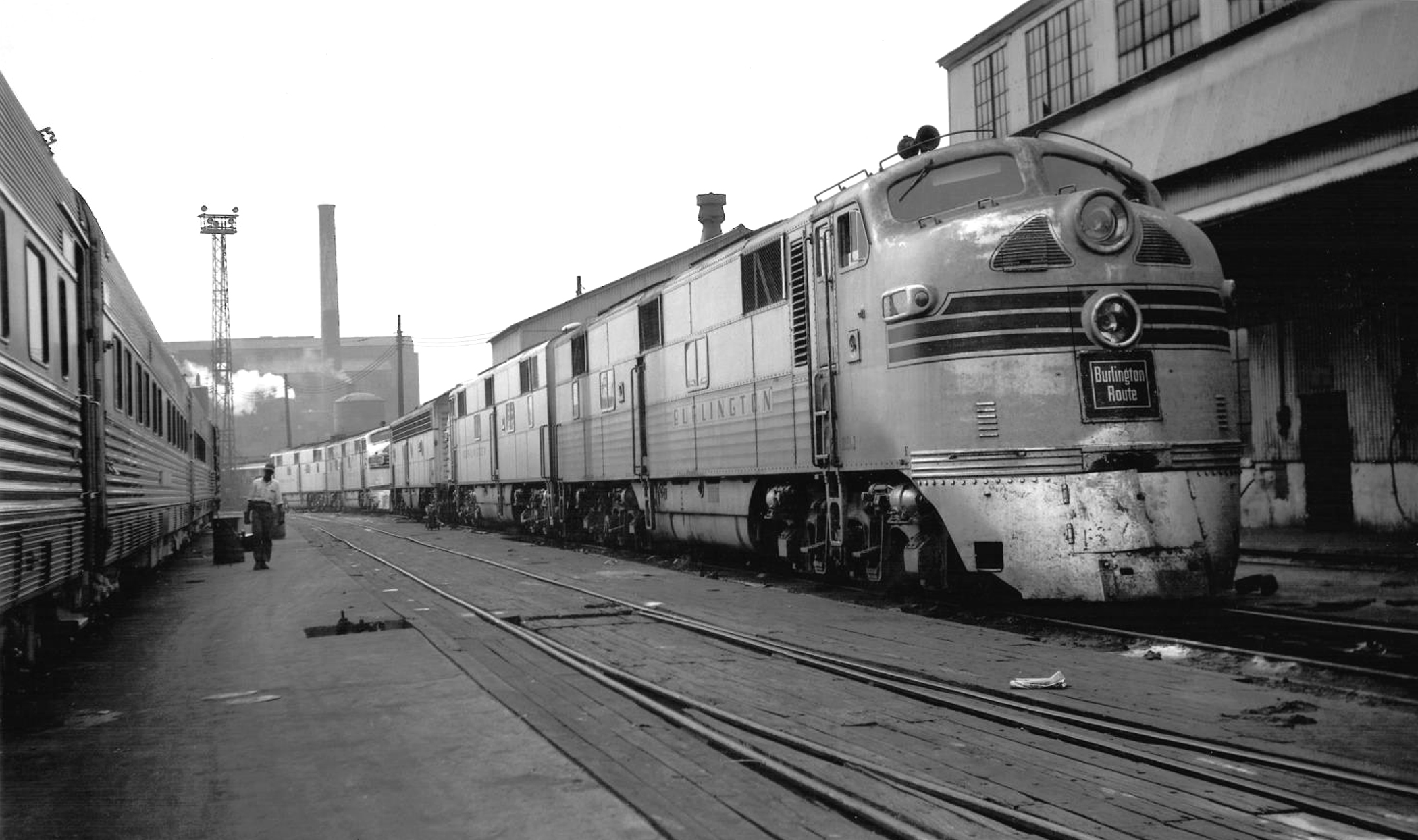Hol,
My guess is there isn't a 27 pin my receptacle behind the door but I'm thinking there is the train line connector for the HSC electro-pneumatic brake control.
Ed Pavlovic
Sent from my iPhone
Dennis:
To the best of my knowledge, your information is all correct, and 9924A in this photo provides testimony to why the SSS (simulated stainless steel) shadow-lining was not more widely applied and why stainless steel side
panels were adopted instead. I have a question, however: Why, in this fall 1950 photo, is there a nose MU door behind the right-hand (left in the photo) grille of this E7?
Hol

[Attachment(s) from
qchooch@aol.com included below]
An inquiry about the shadow lined CB&Q E-7's was made by Ray Bedard of San Jose, CA on January 4th.
Both Hol Wagner and Rich Gortowski replied concerning any other shadow lined E-7 units other than the 9921B that is depicted in the BRHS E unit Bulletin #10 but no resolution was provided.
So I am offering this additional information.
For those interested and as verified many years ago by Hol Wagner and Rich Gortowski, the Burlington began shadow lining their equipment beginning around 1950 when they started using converted heavyweight coaches as power generator cars for the first new
Budd stainless steel commuter coaches just being delivered at that time. The silver power cars had shadow lining applied to replicate the stainless steel fluting on the commuter cars.
The current January 2018 BRHS calendar picture depicts one of these combined power car/coaches on a dinky run taken at the Stone Avenue station by Mel Patrick. The faded shadow lining is still slightly visible with the shadow lines replicating the fluting
aligned with and passing through the rivets of the coach's lower car body side.
This same shadow lining was applied to a few of the repainted in silver Pullman sleepers purchased by the Burlington in 1948 in the Pullman divestiture. Several of their heavyweight diners and baggage cars also received the silver paint and shadow lining.
Apparently their "Zephyr Pit" diesel shop in Chicago was directed to experiment with the shadow lining on two of the older E-7 units that had not been fitted with stainless steel side batten panels. So the second E-7 unit, the 9924A (as stated per the
photo caption on the back of a J. Michael Gruber "Mainline Photos" print of the unit at the Chicago Zephyr Pit in the fall of 1950) and the previously mentioned 9921B E-7 unit were the lucky recepients of the experimental paint scheme. Frequent washings and
the resulting shadow line wear and tear made these schemes a one-time application, as was pretty much the case with the power cars, Pullmans and diners, with future repainting being in silver with no shadow lines.
Hol and Rich please feel free to correct any incorrect statements I may have made.
I believe the Michael Gruber photo may still available from Mainline Photos.
Dennis Popish